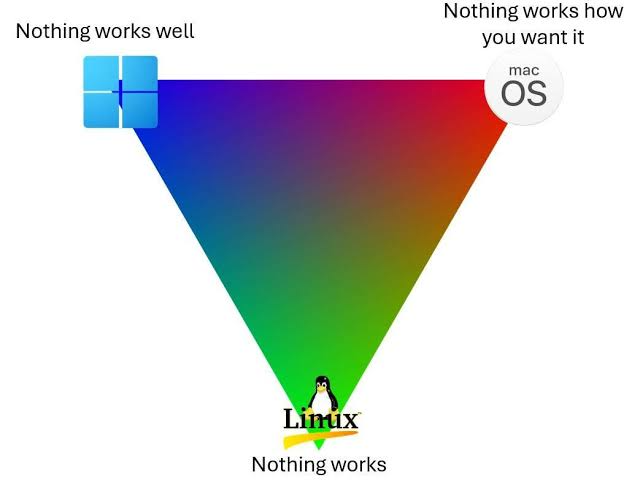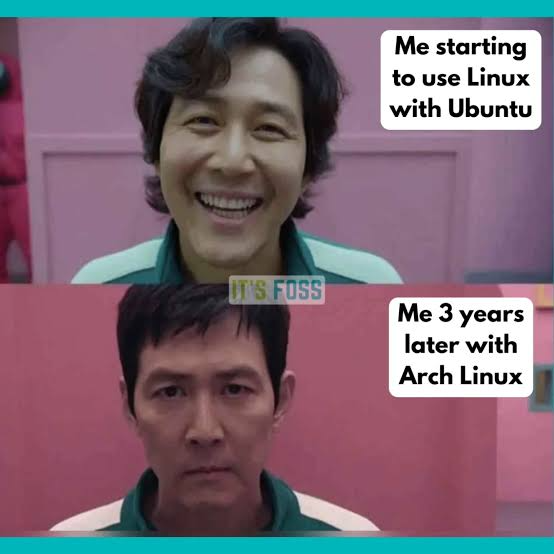
My journey into Linux didn’t actually start on a computer—it started with a modded PSP. Back then, I was fascinated that you could change the boot video, menu theme, sounds, layout, and even the startup animation for games. Later, when smartphones became popular, Android brought that same sense of control. Rooting allowed me to customize everything, from flashing new ROMs to adding apps like Fluid Navigation Gesture, an app that lets you assign custom swipes and taps for navigation.
That idea of being able to shape your device however you wanted stuck with me. Eventually, it led me to Linux.
My First Dive into Ubuntu
My first real encounter with Linux was during college, when I worked with a classmate on a Ruby on Rails project. He suggested Ubuntu (a beginner-friendly Linux distribution) since setting it up on Windows was giving me trouble.

At first, it was overwhelming. Installing Ubuntu felt like carefully following a recipe where a single mistake could ruin the dish. Miss a step, and you might end up restarting, or worse, reinstalling the entire system. However, those early struggles taught me a lot. Linux made me understand how an operating system really works, instead of just clicking “Next” until things were installed.
The Comfort of Windows vs The Freedom of Linux
Windows has its strengths: it’s convenient, polished, and excellent for general use—especially gaming. It’s still the operating system I fall back on when I want everything to work without thinking about it.
Linux, however, offered more flexibility and control. For development and customization, Linux felt like a better fit.
Discovering Kubuntu and KDE Plasma
After using Ubuntu for some time, I realized GNOME (Ubuntu’s default desktop environment) wasn’t giving me the level of customization I wanted. That’s when I moved to Kubuntu (Ubuntu, but with KDE Plasma as its desktop environment).
KDE Plasma stood out because it gave me a desktop that was both elegant and adaptable. Some of the features I really appreciated were:
One of my favorite features is hotkeys - as someone who uses Vim and less mouse actions, the custom hotkeys and macros are the perfect partner in this setup.
However, after a couple of years on Kubuntu, I ran into a downside: system updates occasionally broke things. Dependencies would fail, features stopped working properly, and at times the only solution was a clean reinstall.
Arch Linux: Not For the Faint of Heart
These frustrations led me to try Arch Linux (a lightweight Linux distro known for simplicity and full control. Also SteamOS uses Arch Linux on KDE Plasma). Arch isn’t known for being easy—it requires you to set up everything yourself—but that’s also its strength. Instead of inheriting a system preconfigured by someone else, you build it from the ground up, only installing what you need.
This process gave me a better understanding of how my system worked. The result was an operating system that felt lighter, faster, and more personal. Additionally, whenever I got stuck, I'd just do a quick Google search and troubleshoot.
Why I'll stick with Linux
Looking back, my path with Linux has been one of exploration:

Linux isn’t always smooth—things break, updates fail, and sometimes you have to start over—but that’s part of the experience. For me, it represents freedom: the ability to experiment, learn, and shape the system into exactly what I want it to be.
References:
Thank you for taking the time to read my article. If you are interested in learning more about me we can connect with each other.
If you're curious to know more about Montani International Inc please feel free to explore our various online platforms and be sure to check out some of our informative articles, latest project updates, and behind-the-scenes glimpses of what it's like to work at Montani.